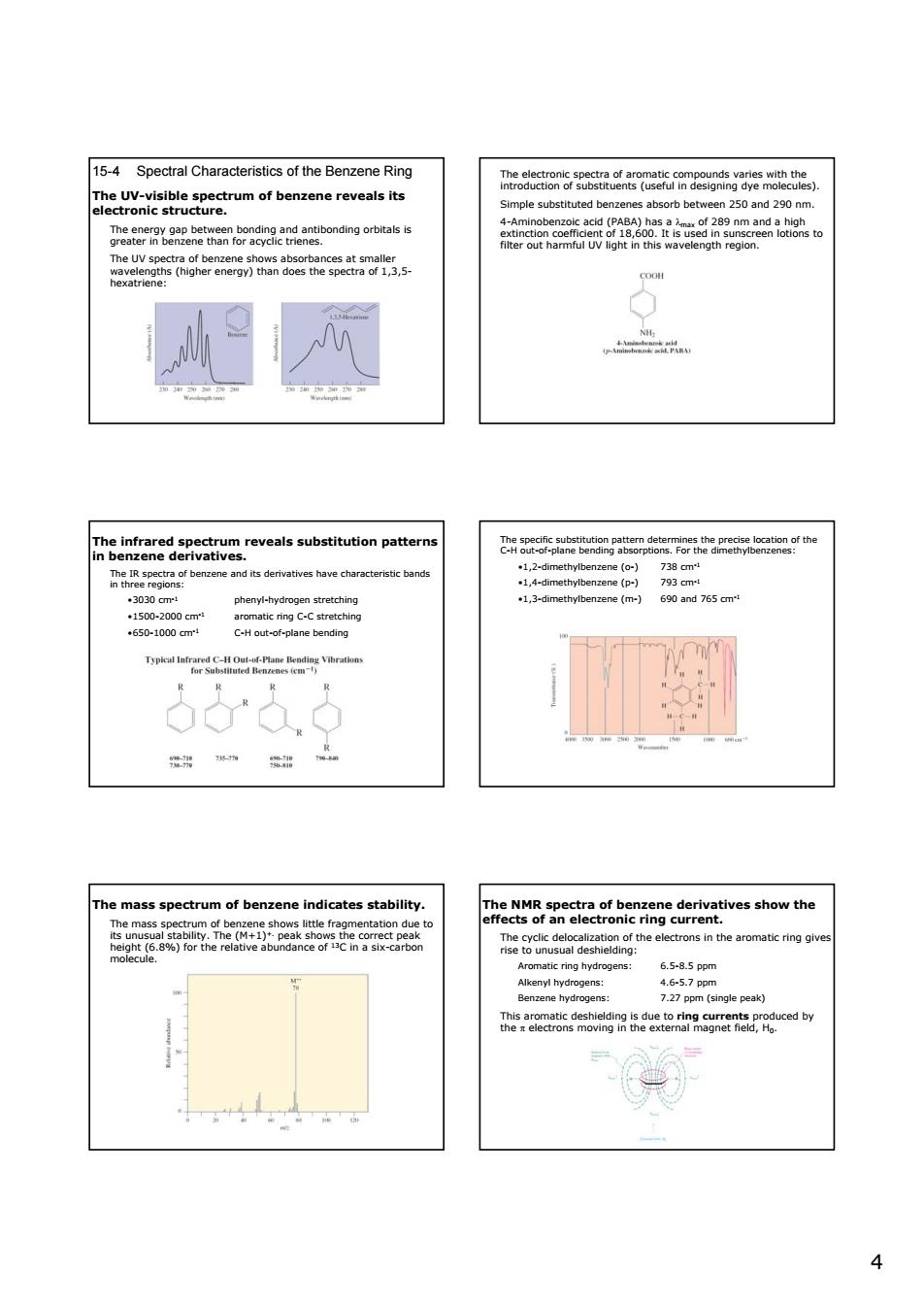正在加载图片...

15-4 Spectral Characteristics of the Benzene Rine Teaeconkntasmecmegesgamethcte of benzene reveals t geaa82etwmn6a3e9dabcndngorbta teristic band phenyl-hydr 1,3-methybnene (m-) 690 and 765 om 650-1000cr: of ben ates tability he82Peac6heage.deravesshowhe ns in the aromatic ring ring h 6,5-85pp 44 15-4 Spectral Characteristics of the Benzene Ring The UV-visible spectrum of benzene reveals its electronic structure. The energy gap between bonding and antibonding orbitals is greater in benzene than for acyclic trienes. The UV spectra of benzene shows absorbances at smaller wavelengths (higher energy) than does the spectra of 1,3,5- hexatriene: The electronic spectra of aromatic compounds varies with the introduction of substituents (useful in designing dye molecules). Simple substituted benzenes absorb between 250 and 290 nm. 4-Aminobenzoic acid (PABA) has a λmax of 289 nm and a high extinction coefficient of 18,600. It is used in sunscreen lotions to filter out harmful UV light in this wavelength region. The infrared spectrum reveals substitution patterns in benzene derivatives. The IR spectra of benzene and its derivatives have characteristic bands in three regions: •3030 cm-1 phenyl-hydrogen stretching •1500-2000 cm-1 aromatic ring C-C stretching •650-1000 cm-1 C-H out-of-plane bending The specific substitution pattern determines the precise location of the C-H out-of-plane bending absorptions. For the dimethylbenzenes: •1,2-dimethylbenzene (o-) 738 cm-1 •1,4-dimethylbenzene (p-) 793 cm-1 •1,3-dimethylbenzene (m-) 690 and 765 cm-1 The mass spectrum of benzene indicates stability. The mass spectrum of benzene shows little fragmentation due to its unusual stability. The (M+1)+. peak shows the correct peak height (6.8%) for the relative abundance of 13C in a six-carbon molecule. The NMR spectra of benzene derivatives show the effects of an electronic ring current. The cyclic delocalization of the electrons in the aromatic ring gives rise to unusual deshielding: Aromatic ring hydrogens: 6.5-8.5 ppm Alkenyl hydrogens: 4.6-5.7 ppm Benzene hydrogens: 7.27 ppm (single peak) This aromatic deshielding is due to ring currents produced by the π electrons moving in the external magnet field, H0